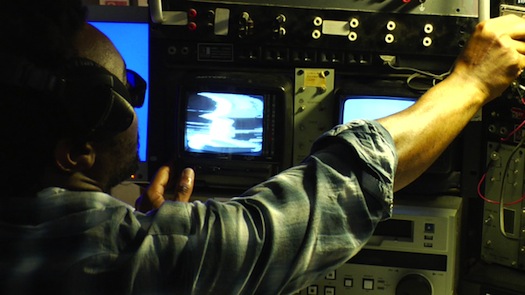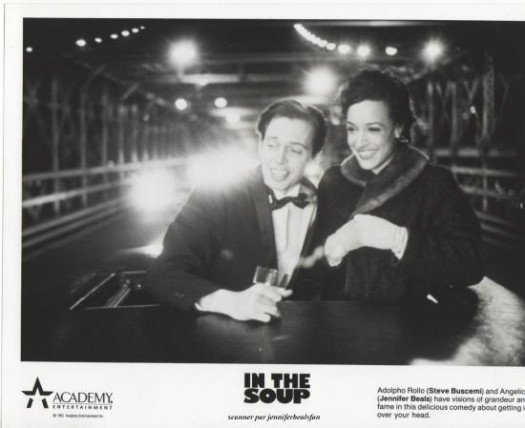What is a Producer’s “Vision”? How does she keep it all together and manage to lead all the various pursuits to a common goal? Do different approaches assure different results? Does different content require a different process?
Hank Blumenthal is old school NYC production. We’ve known each other a long time. He’s done it all. Recently he went back to school and has been focusing on new media. He’s a regular commenter on this blog; his comments lead me to ask him to take the lead at times, and today he offers us his first guest post.
Ted asked me to write a post about what it means to be a creative indie producer and the aesthetics of producing an independent movie. I can’t fully answer that question but I can start to address the main elements of that creative process and aesthetic. One approach might be to organize our thinking around four aesthetic aspects of producing: vision, community, logistics, and perspective.
A producer must have aesthetic vision. He literally has to be able to see the finished film in his mind’s eye. He has to grapple with the way it will situate meaningfulness in the culture a year in the future. And he must be able to share that vision with people so that they can be inspired enough to invest time, money, or spirit in a project.
Sometimes a film’s vision comes from a producer who conceives an idea, reads a book, or experiences a gestalt; and sometimes he embraces that from another creator. In either case this becomes the aesthetic basis for a project. This is the crucible where meaning is created. This meaning is informed by an argument or dialogue we want to have about how we perceive the world and how we share that understanding. This dialogue is grounded in artistic pleasure, emotional empathy, intellectual discourse, politics and economics.
On my last project, The Ghost Club, the idea for the story and most of the particulars came in a flash of inspiration and few hours of copious scrawling in my journal. My goal was to push the boundaries of storytelling to include a new form I call a storyscape – a story that is greater than the sum of movies, games, experiences and conceived as a whole. The storyscape is the medium, like a novel, that transmedia storytelling plays out on.
I had to conceive a whole universe with rules and connections between media like augmented reality games, websites, ghostpedias, and webisodes. Certainly there were only glimpses of what some of those elements were to be but the vision of the producer is to provide that scaffolding to the other artists – writers, directors, programmers, user experience designers – and to define the map where our efforts would go. Good producing, like modern transmedia, is about leaving gaps for our collaborators to fill in.

The producer must now form the aesthetic community that enforces that vision and interpretation. The key creatives on a movie – director, writer, producer – must disseminate and encompass all the other creative visions – actors, animators, designers, musicians, etc. – to make a community of meaning. The producer must take responsibility for this community and the coordination that scales the cinematic vision to the divisions of labor in making a movie. That is how the set decorator can choose the perfect flower or the composer the amazingly perfect cue. The producer, being responsible for the creation of an aesthetic ecology, must mediate translations of core principles across the various people involved, both communicating the larger vision while still respecting the particular area of the production.
I cannot stress this point enough, the aesthetics of the community’s collaboration is owned by the producer. The producer is responsible for who and how that team comes together. Providing an environment where people can excel and collaborate is fundamental to a producer’s role. Flexibility, openness, and respect for everyone in the process are a critical aesthetic of a producer’s community.
I was fortunate enough to work as a script supervisor with Spike Lee on music videos and commercials and see how he married a clear director’s vision with a producer’s openness to his collaborators to create the best works. Often crew, any crew (occasionally myself), would step up to him and make a suggestion. He would graciously and ruthlessly compare that against his vision and accept or reject it. More often it was rejected but the joy of collaboration was when he said “yes.” Movies are a collaborative medium and the way that process is curated defines the finished work. At the level of production, great indie movies can be traced to well-coordinated aesthetic ecologies, and therefore to careful translation from the producer.
To frame the next point, aesthetics and logistics, consider what Stanley Kubrick said in Sight and Sound in 1972: “I don’t think in terms of big movies, or small movies. Each movie presents problems of its own and has advantages of its own. Each movie requires everything that you have to give it, in order to overcome the artistic and logistic problems that it poses.” The aesthetics of logistics are where the producer’s collaboration with the ecology of production becomes artistic. Choices are not solely artistic but also exist within a larger economy that focuses attention and resources. This is where producing becomes artistic, and that art is not simply creative but economic. Where your resources are applied and to what aesthetic result becomes a large part of what the finished product looks like.
I still kick myself for not spending a thousand dollars (that I didn’t have anyway) on a location for “In the Soup” that was 200 ft closer to a view of Manhattan. The producer balances the artistic demands of the picture and makes hundreds of creative choices about crew, locations, props, sets and wardrobe – not to mention the actors who can have a huge artistic contribution of their own to make. The ability to translate creative vision down the line of production, then, is also the ability to translate final decisions – driven by who, where, how, and how much – to harmonize these points of production.

Finally there is perspective. When everyone else is up to their necks in the muck of production and post production it is essential that someone maintain the agreed upon artistic vision and keep their attention focused on the ultimate goal. The producer is the one who reminds the director of what the vision is as the director sinks into the serendipity of artistic creation often pulled by the brilliant thoughts of his collaborators. The producer is responsible for the direction of the picture through his aesthetic consistency.
Vision, community, logistics, and perspective can provide a beginning for how we can analyze the aesthetics of producing. I hope this can begin a deeper discussion into each of these areas and what that aesthetics entails. As to what a creative producer does, I think this touches on the many areas he must supply the aesthetics and vision. Movie making and meaning making are an ecology of aesthetic choices and the producer defines the nodes of that ecology.
—Hank Blumenthal
Hank Blumenthal is a producer and director of movies (The Ghost Club, In the Soup, Strawberry Fields) a creative director and producer for interactive television and digital media (Microsoft, Google, Viacom, R/GA, Bravo and IFC,) and a PhD student in digital media at Georgia Institute of Technology investigating transmedia storytelling and new paradigms for stories.


